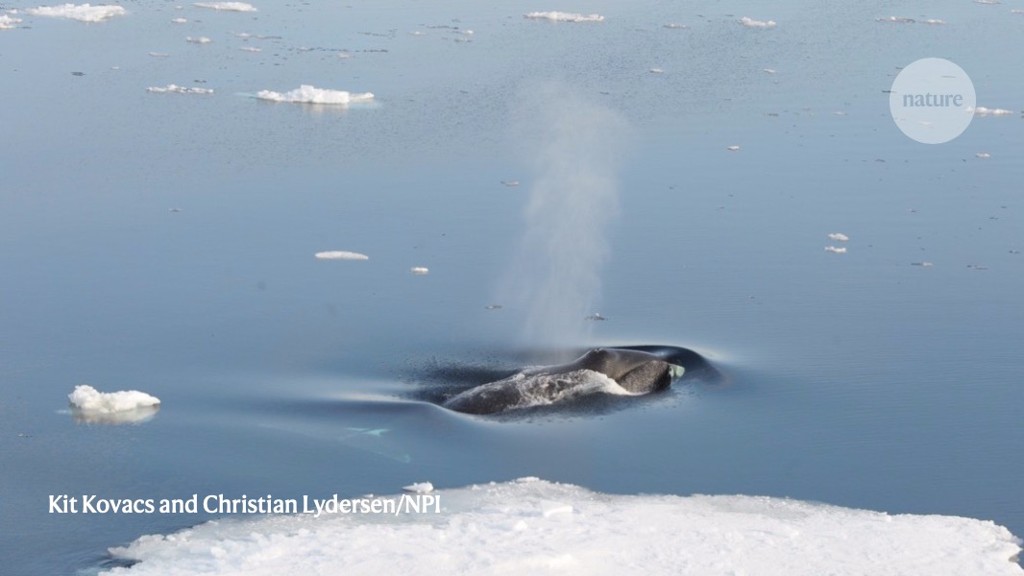Most bowhead whales head south for the winter, but the Spitsbergen’s (pictured) go north, where they shelter beneath the ice. Credit: Kit Kovacs and Christian Lydersen/NPI
Animal behaviour
A cold-loving ocean giant called the Spitsbergen’s bowhead whale had been hunted almost to extinction by the 1990s. The whales’ songs were recently detected in the waters east of Greenland, but scientists knew little about the endangered animals’ habits.
Kit Kovacs at the Norwegian Polar Institute in Tromsø and her team sought hard data about these elusive whales, which belong to the Spitsbergen stock of bowheads (Balaena mysticetus), named for an island in the Arctic Circle. Riding in a helicopter dispatched from an icebreaker, the researchers shot transmitter tags into the blubber of 13 Spitsbergen’s bowheads.
The animals’ paths show that, contrary to other bowheads’ habits, Spitsbergen’s bowheads journey south in summer and north in winter. As a result, the whales spend the winter in deep, cold seas almost completely covered in ice, often more than 100 kilometres from large stretches of open water, relying on a few cracks in the ice to breathe.
The authors suggest that whalers eliminated whales that frequented balmier winter seas. The steadfastness of the ice protected the hardy whales that wintered farther north. Now their descendants are multiplying, and filling the deep with their songs.

